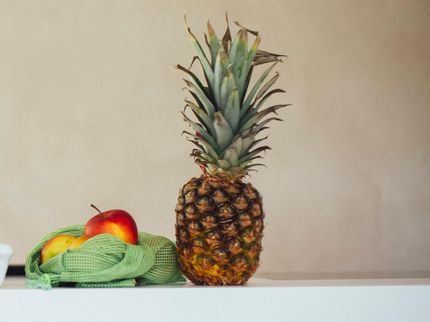How apples get their shapes
Using theory and experiments, researchers show how apples get their distinct cusp-like features
apples are among the oldest and most recognizable fruits in the world. But have you ever really considered an apple’s shape? Apples are relatively spherical except for that characteristic dimple at the top where the stem grows.

Experimental measurements of apple cross sections at different stages of growth
Harvard SEAS
How do apples grow that distinctive shape?
Now, a team of mathematicians and physicists have used observations, lab experiments, theory and computation to understand the growth and form of the cusp of an apple.
The paper is published in Nature Physics.
“Biological shapes are often organized by the presence of structures that serve as focal points,” said L Mahadevan, the Lola England de Valpine Professor of Applied Mathematics, of Organismic and Evolutionary Biology, and of Physics at the Harvard John A. Paulson School of Engineering and Applied Sciences (SEAS) and senior author of the study. “These focal points can sometimes take the form of singularities where deformations are localized. A ubiquitous example is seen in the cusp of an apple, the inward dimple where the stalk meets the fruit.”
Mahadevan had already developed a simple theory to explain the form and growth of apples but the project began to bear fruit when the researchers were able to connect observations of real apples at different growth stages and gel experiments to mimic the growth along with theory and computations.
The research team began by collecting apples at various growth stages from an orchard at Peterhouse College at University of Cambridge in the U.K., (the alma mater of another famous apple lover, Sir Isaac Newton).
Using those apples, the team mapped the growth of the dimple, or cusp as they called it, over time.
To understand the evolution of the shape of the apple and the cusp in particular, the researchers turned to a long-standing mathematical theory known as singularity theory. Singularity theory is used to describe a host of different phenomena, from black holes, to more mundane examples such as the light patterns at the bottom of a swimming pool, droplet breakup and crack propagation.
“What is exciting about singularities is that they are universal. The apple cusp has nothing in common with light patterns in a swimming pool, or a droplet breaking off from a column of water, yet it makes the same shape as they do,” said Thomas Michaels, a former postdoctoral fellow at SEAS and co-lead author of the paper, now at University College London. “The concept of universality goes very deep and can be very useful because it connects singular phenomena observed in very different physical systems.”
Building from this theoretical framework, the researchers used numerical simulation to understand how differential growth between the fruit cortex and the core drives formation of the cusp. They then corroborated the simulations with experiments which mimicked the growth of apples using gel that swelled over time. The experiments showed that different rates of growth between the bulk of the apple and the stalk region resulted in the dimple-like cusp.
“Being able to control and replay morphogenesis of singular cusps in the laboratory with simple material toolkits was particularly exciting,” said Aditi Chakrabarti, a postdoctoral fellow at SEAS and co-author of the paper. “Varying the geometry and composition of the gel mimics showed how multiple cusps form, as seen in some apples and other drupes, such as peaches, apricots, cherries and plums.”
The team found that the underlying fruit anatomy along with mechanical instability may play joint roles in giving rise to multiple cusps in fruits.
“Morphogenesis, literally the origin of shape, is one of the grand questions in biology,” said Mahadevan. “The shape of the humble apple has allowed us to probe some physical aspects of a biological singularity. Of course, we now need to understand the molecular and cellular mechanisms behind the formation of the cusp, as we move slowly towards a broader theory of biological shape.”
This research was co-authored by Sifan Yin, a visiting student from Tsinghua University and Eric Sun, a former undergraduate in the lab.


























































